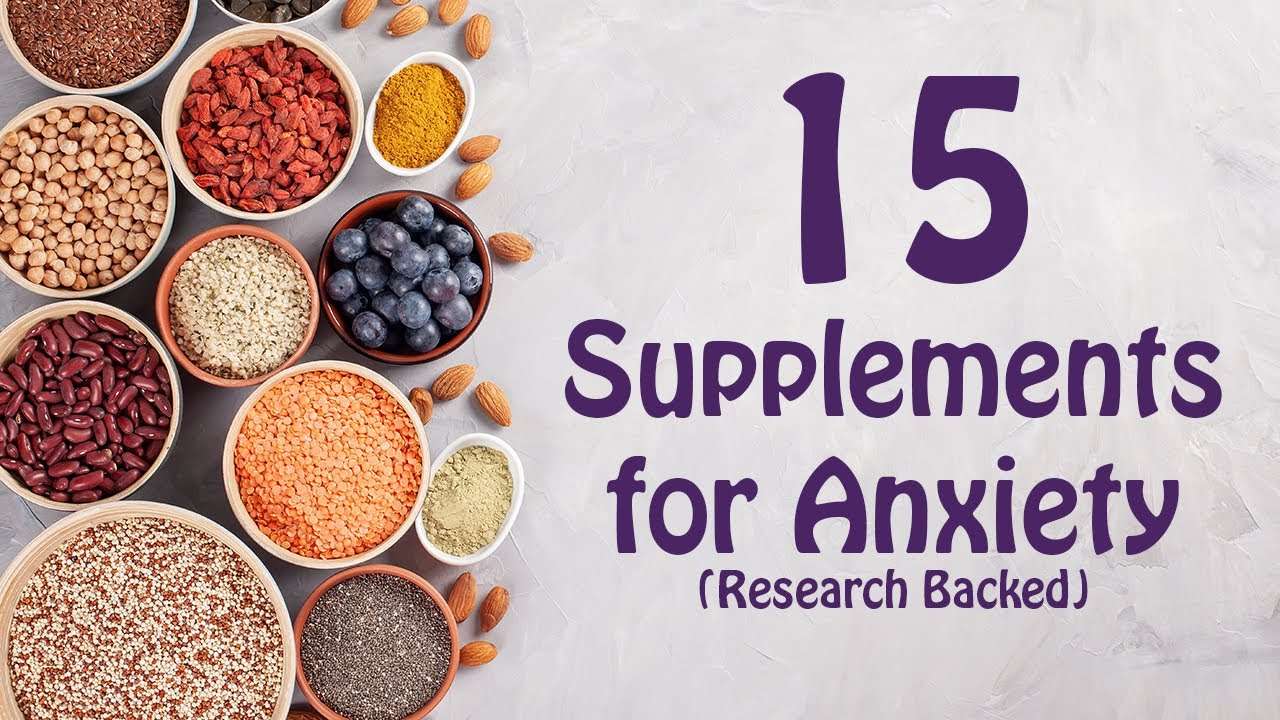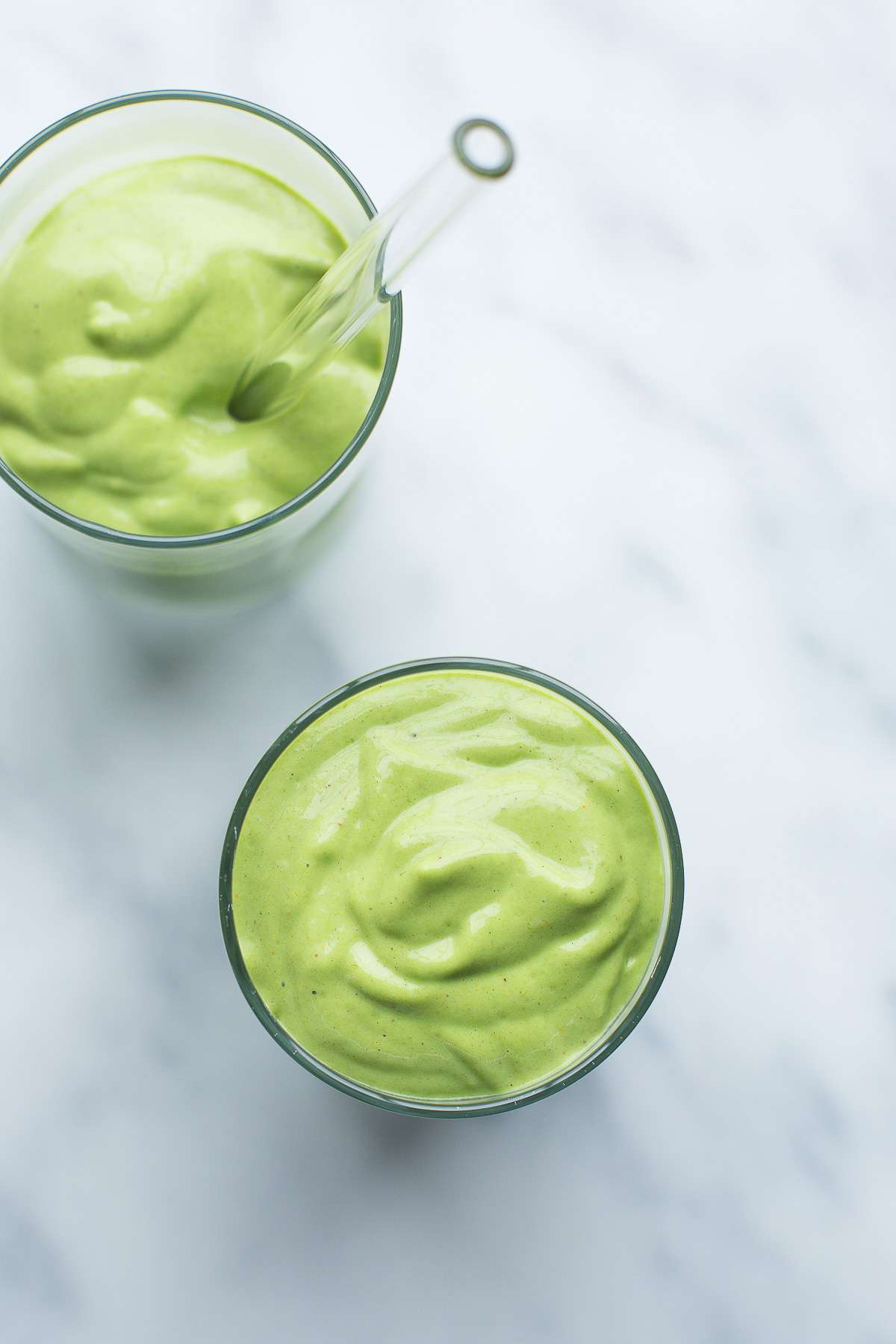When people are looking to treat their anxiety without medication, what they usually mean is that they want to know what herbs and supplements will work for them. And because I get asked about this a lot, I did a ton of research last year on the topic.
So in this video I am going to go over 15 of the research-backed natural treatments for anxiety that have been shown to have an impact on anxiety. I am also going to talk about a much more holistic approach to mental health. At the end of this video I’ll list 7 other effective treatments for anxiety, but this video is mostly about supplements. So let’s talk about a couple of ways to combat anxiety, other than medication
The first thing you could consider is to see a doctor. Now, you can look into medication options, but that’s not the reason I think you should do this first. You should see a doctor to rule out any underlying medical conditions.
Before spending tons of money or effort on therapy or psych meds or other treatments, you should just make sure that your body is healthy. Knowing that your heart and lungs are just fine will help reassure you that your symptoms are anxiety-induced rather than otherwise.
Anxiety is also associated with medical conditions, so you may want to get tested for vitamin D, Bs, magnesium, zinc, iron, and other common nutrient deficiencies that can impact sleep, energy, and mood, and just get checked for general physical health.
And you might want to consider blood tests to rule out things like thyroid disorders, diabetes, sleep disorders, MS, Lyme disease, food allergies, gluten intolerance, endocrine disorders, hormonal changes.
I’m not saying that you have any of these conditions, but you could consider getting checked just to make sure that you’re healthy because many physical disorders mimic anxiety. So if it turns out to be, you know, a magnesium deficiency or some other thing that’s really impacting your mood, then that’s something that’s a lot more easy to treat than spending months in therapy.
Now, I’m a therapist. I love therapy. I think it’s incredible that anyone can do therapy. But your physical health also really matters.
And the other thing you could talk with your doctor about is supplementing with some of these supplements that have a lot of research showing their effectiveness at improving anxiety. So B-complex, zinc, magnesium, vitamin D, and fish oil.
For many people these supplements do nothing, and the research is still in progress to determine effectiveness, but there is some evidence that these supplements may be helpful with anxiety symptoms for people who are nutrient deficient, and they also tend to be inexpensive, and they tend to have few, if any, side effects at the correct doses.
Now, medication can be an effective way to kickstart or supplement or maintain the treatment of anxiety, but it’s generally not the best long-term solution. There’s a lot of options, so just discuss them with your doctor and with your therapist.
We include products we think are useful for our readers. If you buy through links on this page, we may earn a small commission. Here’s our process.
Healthline only shows you brands and products that we stand behind.
Our team thoroughly researches and evaluates the recommendations we make on our site. To establish that the product manufacturers addressed safety and efficacy standards, we:
- Evaluate ingredients and composition: Do they have the potential to cause harm?
- Fact-check all health claims: Do they align with the current body of scientific evidence?
- Assess the brand: Does it operate with integrity and adhere to industry best practices?
We do the research so you can find trusted products for your health and wellness.
Read more about our vetting process.
First, you have to understand what type of cognitive distortion is occurring.

Share on Pinterest
I’ve lived with general anxiety for as far back as my memory goes. As a writer and stand-up comedian, I have the most trouble fighting against social and performance anxiety on a day-to-day basis, as I conduct interviews and interact with editors during the day and then take the stage at night.
My anxiety most often shows itself in what I call “anxiety hangovers,” when I wake up on the day following a social event or meeting or comedy show feeling horrible about everything I did or said — no matter how fun or successful the event felt the night before.
Everyone thinks you’re egotistical and obnoxious, my inner voice spits at me when I wake up.
You said the exact wrong thing to your friend when she asked for your opinion, because you never think before you open your mouth.
You dominated the dinner conversation. No wonder no one likes you.
You were so embarrassing on stage, of course you aren’t a success.
The mean little voice goes on and on and on.
After big events, like a friend’s wedding or important comedy show, I’ve had panic attacks the following morning: a racing heart, trembling hands, and trouble breathing. On other days, I just can’t concentrate because of the worry and feel mentally paralyzed, and the confidence I need to do my work is sunk.
Where cognitive behavioral therapy comes in
The central idea behind cognitive behavioral therapy (CBT) is extremely simple: If you change the way you think, you can change the way you feel.
But if feeling better and escaping depression and anxiety were that easy, we wouldn’t live in a country where psychological distress is increasing.
While I’ve found that I can’t fully eliminate or “cure” my anxiety (and probably never will), I’ve found a simple five-minute CBT exercise that quiets it down each day. My racing thoughts stop, my foggy brain begins to clear, and my fatigue lifts.
Suddenly, I feel like I can start my day.
Called the triple column technique, which was developed and named by clinical psychiatrist Dr. David D. Burns, all it does is change my mindset. But sometimes, this shift is enough to completely shut my anxiety up for the day. A change in how we think about ourselves is all we really need to find a calmer, happier place.
Recognizing cognitive distortions
In 2014, a friend recommended Burns’ “Feeling Good,” a CBT classic that takes readers step-by-step through recognizing negative self-talk, analyzing it rationally, and replacing it with healthier and more accurate thinking.
(Burns also suggests, for many people living with anxiety and depression, to see their doctor and pair therapy and the appropriate medication if deemed necessary.)
The book made it crystal clear that I wasn’t a secretly bad person and incredible failure who can’t do anything right. I’m just a pretty regular person who has a brain that can distort reality and cause way too much anxiety, stress, and depression.
The first big lesson was to learn the specifics of cognitive distortions — those statements that the little voice makes about who I am and what’s going on in my life.
There are 10 big distortions that can occur:
- All or nothing
thinking. When you see things in black and white instead of in shades of
gray. Example: I’m a bad person. - Overgeneralization.
When you extend a negative thought so it reaches even further. Example: I never do anything right. - Mental filter. When
you filter out all the good stuff to focus on the bad. Example: I didn’t accomplish anything today. - Disqualifying
the positive. When you believe a good or positive thing “doesn’t count”
toward your larger pattern of failure and negativity. Example: I guess I survived the talk — even broken clocks
are right twice a day. - Jumping to
conclusions. When you extrapolate an even bigger and broader negative
thought from a small negative experience. Example: He said he didn’t want to go out with me. I must be an unlovable
person. - Magnification or
minimization. When you exaggerate your own mistakes (or other people’s
accomplishments or happiness) while minimizing your own accomplishments and
others’ flaws. Example: Everyone saw me
mess up at the game, while Susan had a perfect night on the field. - Emotional
reasoning. When you assume your negative feelings reflect the truth.
Example: I felt embarrassed, therefore I
must have been acting in an embarrassing manner. - Should
statements. When you beat yourself up for not doing things differently.
Example: I should’ve kept my mouth shut. - Labeling and
mislabeling. When you use a small negative event or feeling to give
yourself a huge, general label. Example: I
forgot to do the report. I’m a total idiot. - Personalization. When you make things
personal that aren’t. Example: The dinner
party was bad because I was there.
How to use the 5-minute triple column technique
Once you understand the 10 most common cognitive distortions, you can start taking a few minutes a day to complete the triple column exercise.
While you can do it in your head, it works amazingly better if you write it down and get that negative voice out of your head — believe me.
Here’s how you do it:
- Make three
columns on a sheet of paper, or open an Excel document or Google
Spreadsheet. You can do it anytime you’d like, or just when you’re noticing
you’re beating yourself up. I like to write mine in the morning when I’m
feeling most anxious, but many people I know write theirs before bed to clear
their minds. - In the first column, write what Burns calls your
“automatic thought.” That’s your negative self-talk, that crappy, mean little
voice in your head. You can be as brief or detailed as you’d like. Yours might
read, My workday was the worst. My
presentation bombed, my boss hates me, and I’ll probably get fired. - Now read your statement (it always looks kind of
shocking to see it in print) and look for the cognitive distortions to write in
the second column. There may be just one or more than one. In the example we’re
using, there are at least four: overgeneralization, all or nothing thinking,
mental filter, and jumping to conclusions. - Finally, in the third column, write your “rational
response.” This is when you think logically about what you’re feeling and rewrite
your automatic thought. Using our example, you might write, My presentation could’ve gone better, but
I’ve had lots of successful presentations in the past and I can learn from this
one. My boss was confident enough to have me lead the presentation, and I can
talk to her tomorrow about how it could’ve gone better. There’s no evidence at
all that this one subpar day at work would get me fired.
You can write as many or as few automatic thoughts as you want. After a good day, you might not have any, and after a big event or conflict, you might have to work through a lot.
I’ve found that after years of doing this, I’m much better at catching my brain in the middle of a distortion and much more comfortable in recognizing that, at best, my negative talk isn’t rational at all. At worst, it’s exaggerated or overdramatic.
And is it proven to work?
A 2012 meta-analysis of 269 studies about CBT found that while this simple talk therapy is most helpful in combination with other treatments, it’s very successful when specifically treating anxiety, anger management, and stress management. Go forth and fill out your triple columns!
Share on Pinterest
Sarah Aswell is a freelance writer who lives in Missoula, Montana, with her husband and two daughters. Her writing has appeared in publications that include The New Yorker, McSweeney’s, National Lampoon, and Reductress. You can reach out to her on Twitter.




